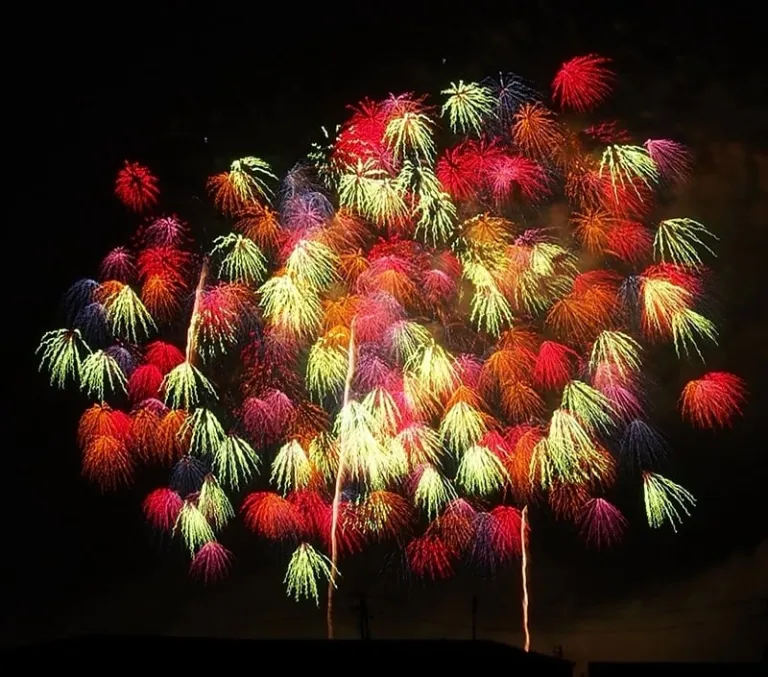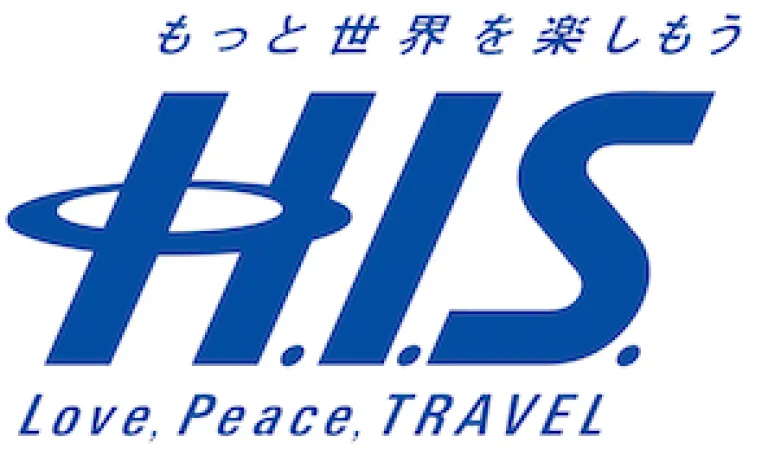Spread the good word!
Hanabi Season Is Coming! You’d Wanna Be in Japan for These 8 Fantastic Fireworks Festivals!

With temperatures climbing and summer going into full swing in Japan, locals and foreigners alike turn to seasonal festivities to take their minds off the heat. And what better way to commemorate the Japanese summer than bright, showy pyrotechnics?
Through the years, , or hanabi (literally translated as ‘flower fire’) — a mainstay of any midsummer celebration — have gone beyond its traditional significance of warding off evil spirits and comforting the dead, to works of beauty appreciated by both young and old.
You haven’t experienced summer in Japan until you’ve been to a festival. Did you know that all of “Japan’s Three Great Fireworks Festivals” — Omagari National Fireworks Competition, Nagaoka Fireworks Festival and Tsuchiura All Japan Fireworks Competition — are in eastern Japan?
Between them and the five other festivals we’ll look at in this article, this area is the clear choice for you to experience the best light shows in Japan — and the JR East Pass is the most convenient way for you to get around eastern Japan to check all of them out!
1. Omagari National Fireworks Competition (全国花火競技大会「大曲の花火」) — Akita
 Image credit: KANSEI
Image credit: KANSEI
With roots tracing back to 1910 in the Meiji Period, the competition is in its 93rd rendition this year. But this event is more than just a display of . The Omagari National Fireworks Competition, or Omagari no Hanabi, brings together pyrotechnicians from all across the country to put forth their best on display for the Prime Minister’s Prize.
With only the best teams allowed to take part in this competition which represents the peak of Japanese , you can be ensured of nothing short of spectacular displays.
A defining feature of this competition, there is a daytime category that starts in the early evening, as well as other lineups in the program such as displays by the past year’s winner and by the event’s sponsors.
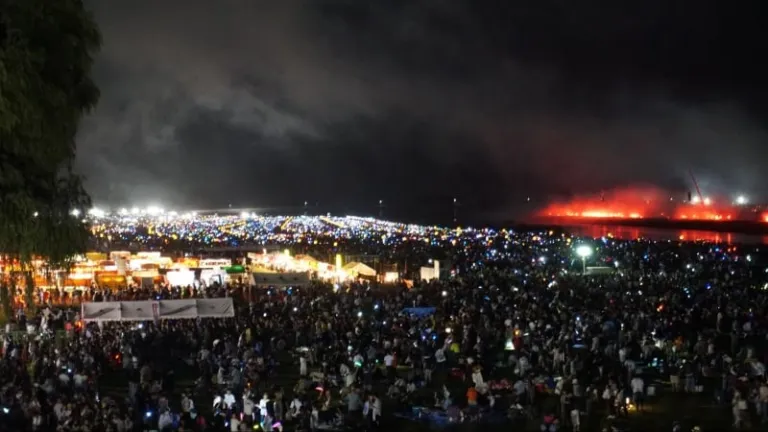 Image credit: Tea
Image credit: Tea
The event draws over 760,000 visitors each year — a staggering number considering that the prefecture’s population is just above 980,000 — making this event both one of the Three Great Fireworks Festivals and Three Great Fireworks Competitions in all of Japan.
While attending the event is entirely free (make sure to bring your own mat to sit on), ticketed seats are also available. If you’re willing to fork out 3,000 yen, you can be ensured of a seat in the prime viewing area to take in the spectacle in its full glory.
 Image credit: Syuzo Tsushima
Image credit: Syuzo Tsushima
If you’re unable to make it for the grand event in the summer, you’ll still be able to get a taste of it at one of the three ‘seasonal chapters’, which falls on the remaining seasons in the year — each of them an hour and 20 minutes worth of bombastic colour and sound. Check out their website and Facebook page for more information on these events!
Omagari National Fireworks Competition
Festival period: 31 August (Sat)
Approx. time of display: 5.15pm~ (daytime); 6.50pm~ (evening)
Nearest station: JR Omagari Station (25-min walk to festival area)
2. Nagaoka Fireworks Festival (長岡まつり大花火大会) — Niigata
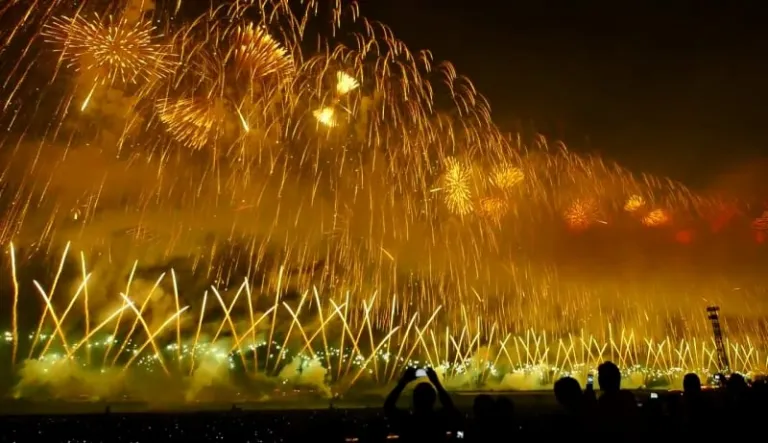 Image credit: 113icecream Japanese Fireworks
Image credit: 113icecream Japanese Fireworks
The Nagaoka Fireworks Festival was started in 1946 as a reconstruction event to mourn those who had perished during World War II, and today sees over 20,000 of various shapes and designs lighting up the night skies, making it another of Japan’s Three Great Fireworks Festivals. Happening along the Shinano River, this 3-day festival features dazzling displays that attract over half a million viewers each year.
While the happen over the latter two days of the event, the first day is filled with just as much festivities, with mikoshi (portable Shinto shrine) parades, toro nagashi (where paper lanterns are sent adrift down the river) and traditional dance parades lining up in the programme. Being a summer matsuri (Japanese festival), you can be sure there won’t be a lack of yatai (food stalls) food to feast on and games to play!
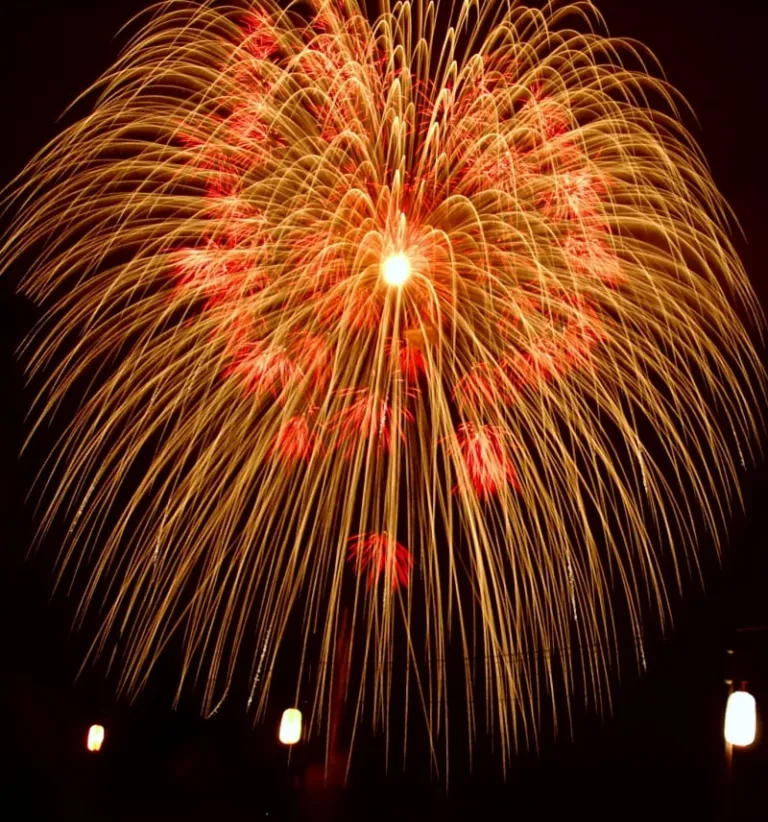 Image credit: Kropsoq
Image credit: Kropsoq
Be sure to catch the famed sanjakudama, massive 300-kilogram shells filled with 80 kilograms of explosives (the maximum weight allowed by law), that when launched fill the night sky with countless falling stars.
Of particular interest this year would be the Reconstruction Praying Fireworks “Phoenix”, which marks the 15th year since the Chuetsu Great Earthquake struck the Niigata region in 2004. The finale to the light show itself is also something to behold — stretching across over 2 kilometres of the Shinano River, it is the widest span of in the world.
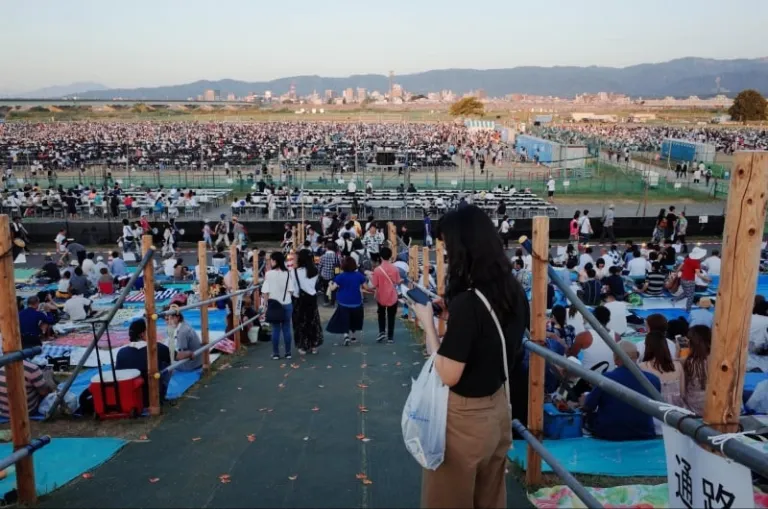 Image credit: SHANGCHIEH
Image credit: SHANGCHIEH
Grand Tickets are available for visitors who want a front seat to the show, though if you would rather watch the show for free, be sure to head down early if you want to get a good spot! Some recommended places to view the show from are around the Chousei Bridge (長生橋) and the Oteo Bridge (大手大橋).
Nagaoka Fireworks Festival
Festival period: 2–3 August annually
Approx. time of display: 7.20pm~9:15pm
Nearest station: JR Nagaoka Station (25-min walk to festival area)
3. Lake Suwa Fireworks Festival (諏訪湖祭湖上花火大会) — Nagano
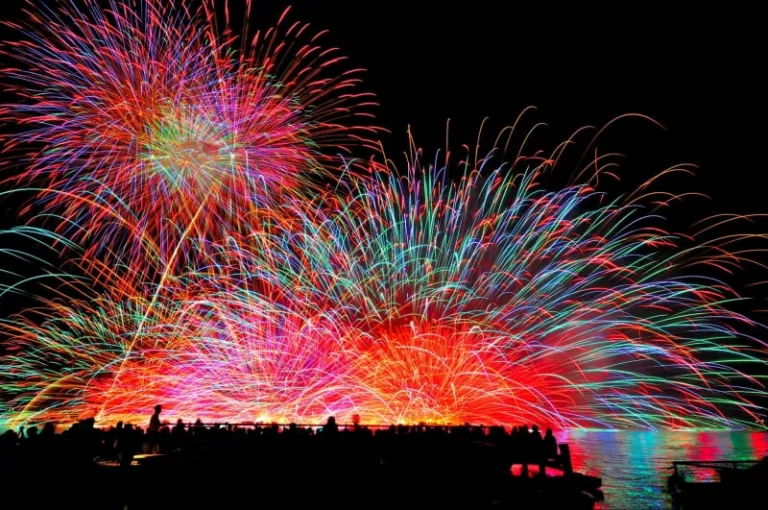 Image credit: 躙
Image credit: 躙
Surrounded by the Japanese Alps and mountains in almost every direction, you can be sure to hear the reverberations of the here as they echo back to you — a bone-rattling viewing experience unique to the Lake Suwa Fireworks Festival.
This is the single biggest display in Japan, with 40,000 being set off over Lake Suwa in one night. Having started shortly after the World War to help brighten the spirits of the devastated people, the festival will be having its 71st rendition this year.
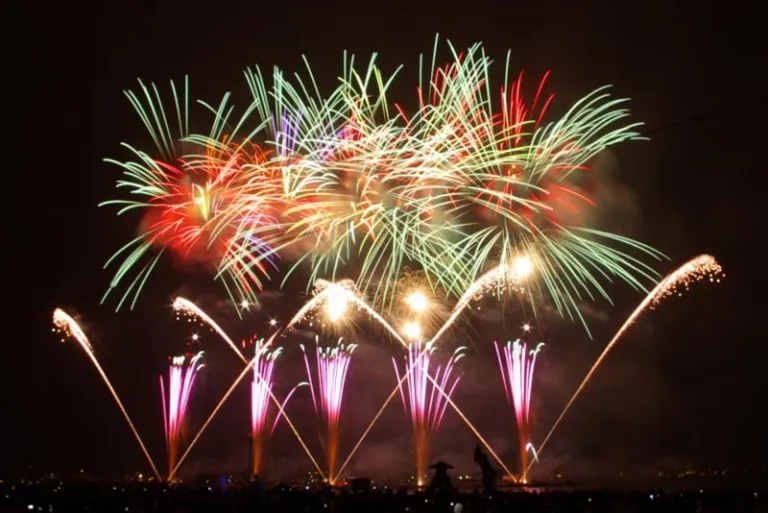 Image credit: Ponta2
Image credit: Ponta2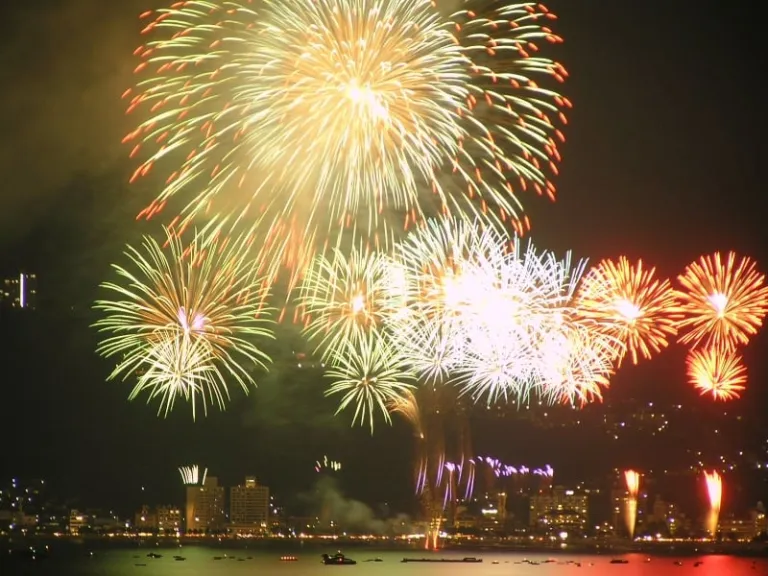 Image credit: 信州高原青馬写真クラブ
Image credit: 信州高原青馬写真クラブ
Highlights of the festival include the breathtaking water star mine display, with being launched in succession from lake and stretching across 2 kilometres of night sky.
 Image credit: mad.jaguar
Image credit: mad.jaguar
The event attracts approximately 500,000 people each year, some arriving as early as the morning of the event, so be prepared to head there early if you want a good spot along the river! Tickets for reserved and non-reserved seats are also available for purchase on the website.
Alternatively, if you can’t catch the display on 15 August, there are still ways to experience the festival:
Every summer night between end July to end August (except 15 August), there will be a 15-minute show at Lake Suwa starting at about 8.30pm.
The National New Fireworks Competition (全国新作花火競技大会) will be held in early September at Lake Suwa, showcasing experimental, avant-garde — about 18,000 which you may not have seen before will be on display, certainly making for a spectacle!
Lake Suwa Fireworks Festival
Festival period: 15 August annually
Approx. time of display: 7pm~9pm
Nearest station: JR Kami-suwa Station (6-min walk to Suwa Lakeside Park)
4. Aomori Nebuta Fireworks Festival (青森花火大会) — Aomori
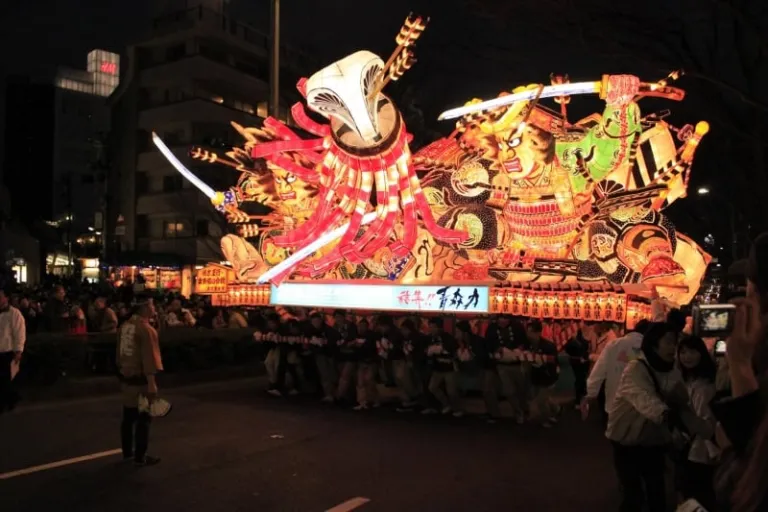 Image credit: POHAN CHEN
Image credit: POHAN CHEN
Being one of the Three Great Festivals of Tohoku, Aomori Nebuta Festival is filled with festivities through its 6-day itinerary, with the main highlights of this festival being the brightly lit colourful nebuta and the lively street procession.
Read also: 5 Biggest Summer Festivals in Tohoku You Must Catch (and the History Behind Them)!
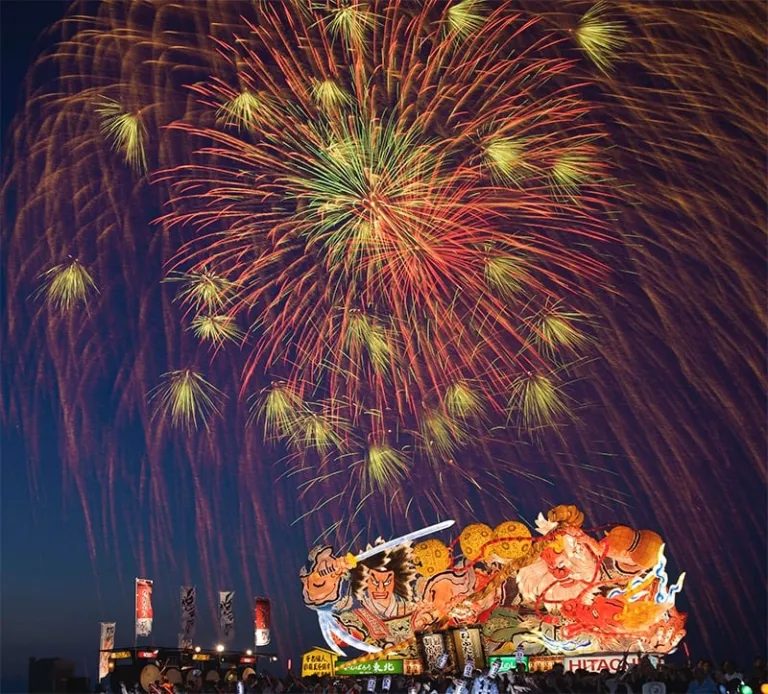 Image credit: East Japan Railway Company
Image credit: East Japan Railway Company
The display at the conclusion of the main festival, Aomori Nebuta Fireworks Festival is also a sight in itself, as the large floats themselves join in the final show in a sea of processions along Aomori Bay.
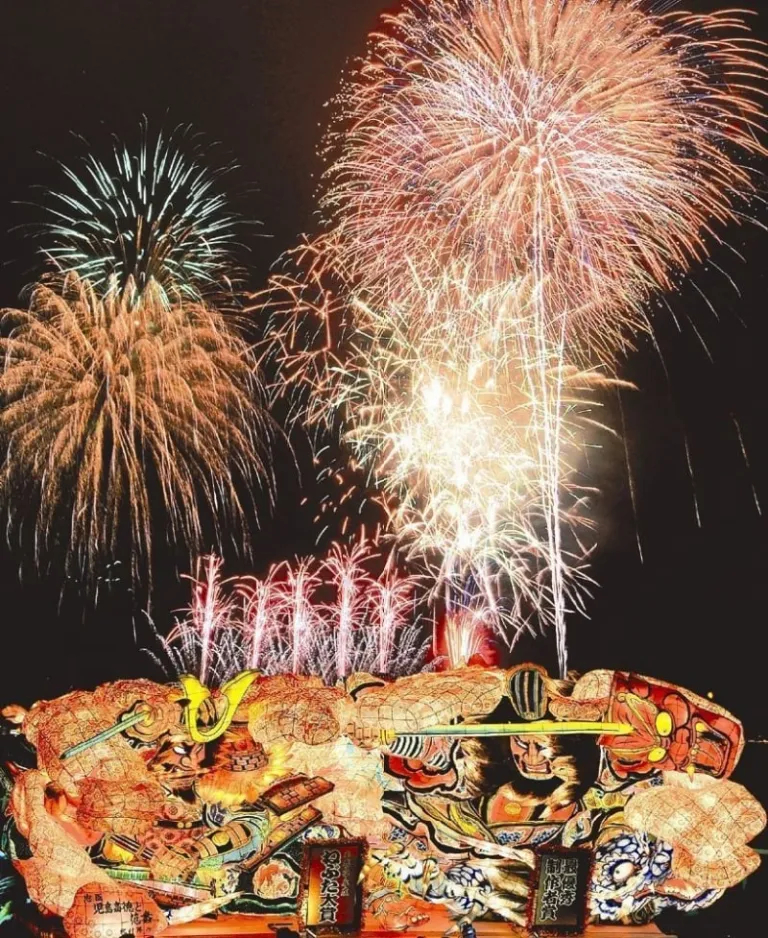 Image credit: Must-See Japan
Image credit: Must-See Japan
Grab some delicious seafood and festival eats from the yatai stalls before heading down to Aomori Bay to catch 11,000 lighting up the night sky.
Aomori Nebuta Fireworks Festival
Festival period: 07 August annually
Approx. time of display: 7:15pm~9pm
Nearest station: JR Aomori Station (5-min walk to festival area)
5. Sendai Tanabata Fireworks Festival (仙台七夕花火祭) — Miyagi
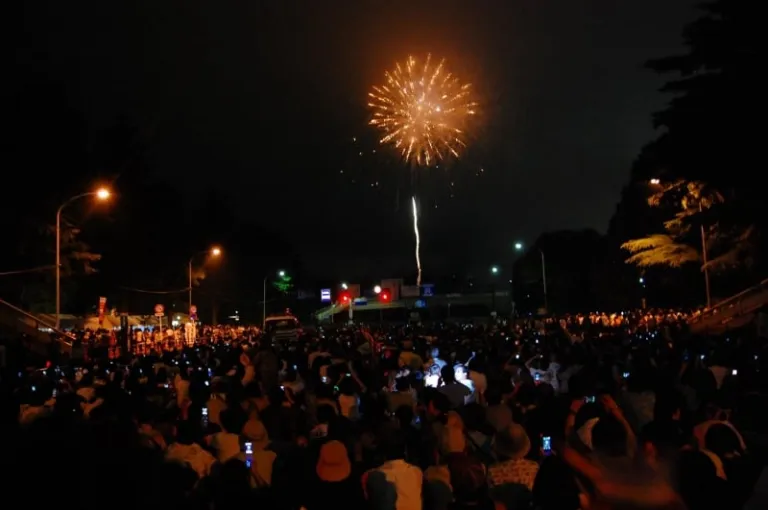 Image credit: Sendai Blog
Image credit: Sendai Blog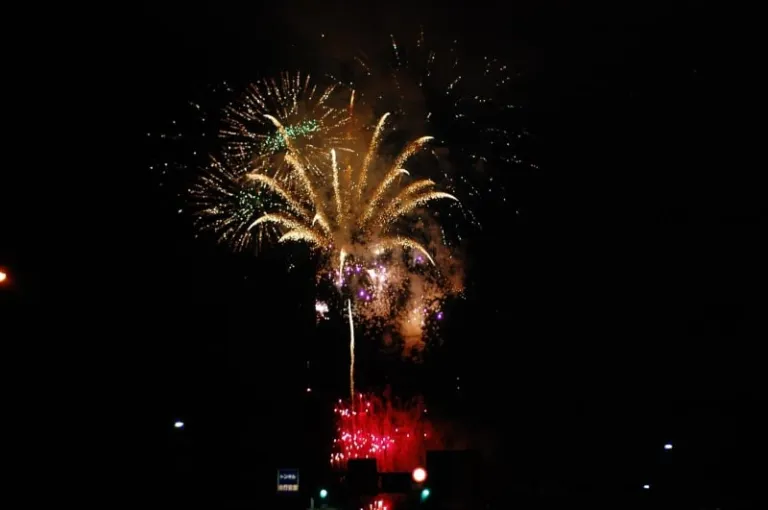 Image credit: Sendai Blog
Image credit: Sendai Blog
Held on the eve of the colourful Sendai Tanabata Festival, 16,000 fill the night sky at the Sendai Tanabata Fireworks Festival to commemorate the start of the celebrations. While festivals typically happen at waterfronts like rivers and bays, the set off here are specially done so in the middle of the city, so it’s possible to behold wherever you are in the city. That being said, the best spot to view the pyrotechnics is in Nishi Park, though you’d have to jostle with the crowd for a spot!
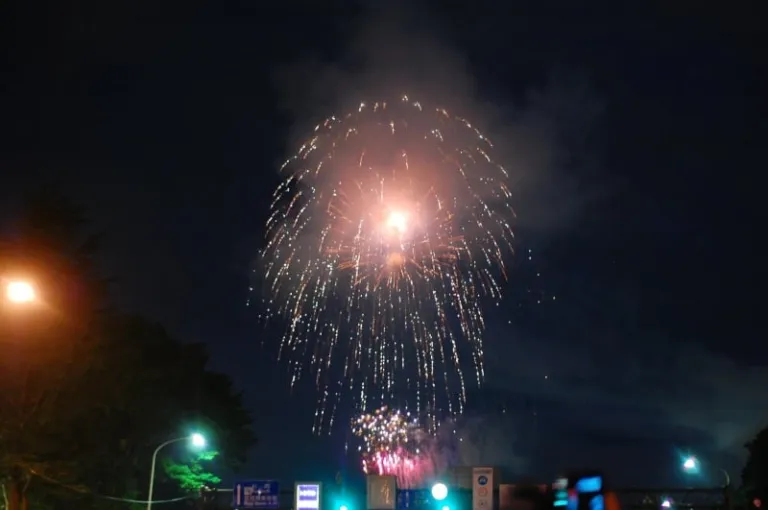 Image credit: Sendai Blog
Image credit: Sendai Blog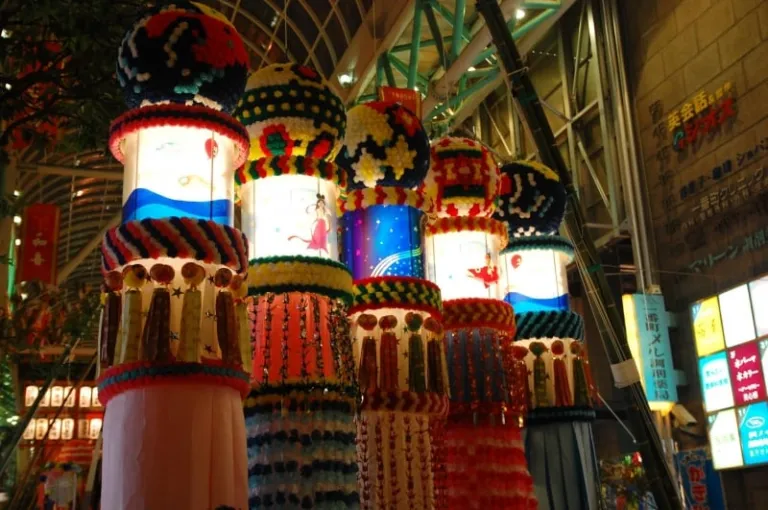 Image credit: Sendai Blog
Image credit: Sendai Blog
This famous festival is well known for thousands of colourful fukinagashi, or paper streamers that line the city’s shopping arcades in commemoration of Tanabata, a traditional event with astrological origins.
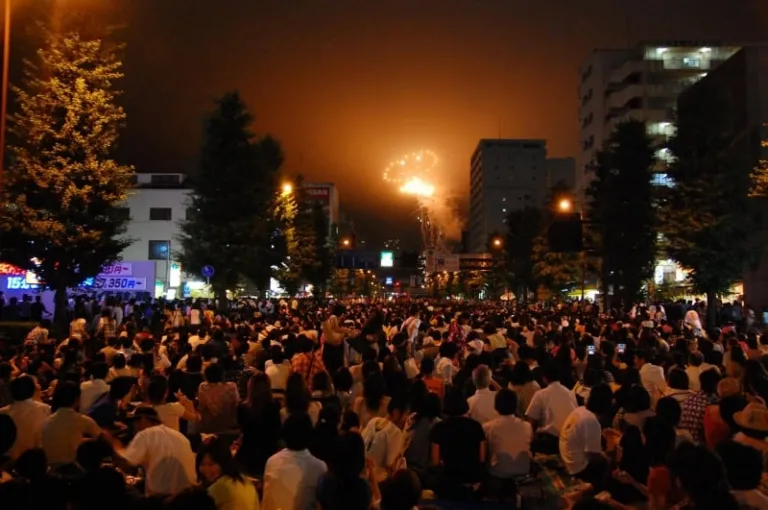 Image credit: Sendai Blog
Image credit: Sendai Blog Image credit: Sendai Blog
Image credit: Sendai Blog
A variety of activities and attractions are also lined up throughout the city centre, such as
delicious yatai food, the bon odori mass dance and a variety of traditional performances.
Sendai Tanabata Fireworks Festival
Festival period: 05 August annually
Approx. time of display: 7pm~8.30pm
Nearest station: JR Sendai Station (24-minute walk to Nishi Park)
6. Akagawa Fireworks Festival (赤川花火大会) — Yamagata
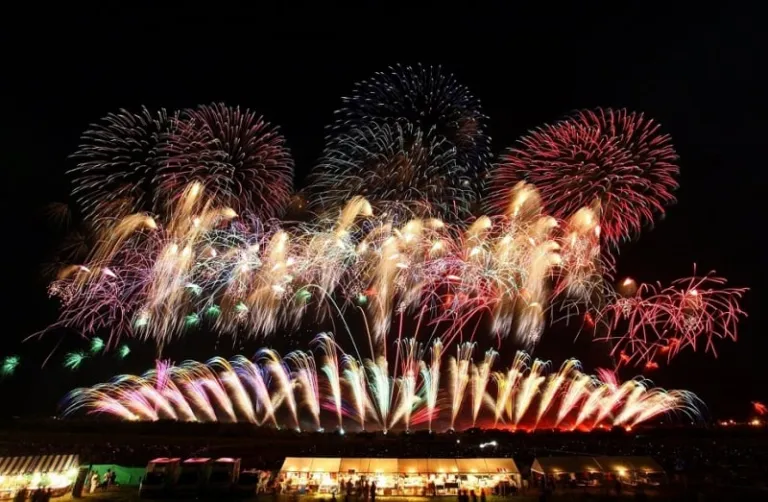 Image credit: Experience Tsuruoka
Image credit: Experience Tsuruoka
Over 25,000 people flock to the banks of Akagawa (‘red river’) for the Akagawa Fireworks Festival, livening the usually small and quiet town of Tsuruoka, though for good reason.
Roughly 12,000 are set off in this hour-and-a-half festival, which is both a festival and a competition for the best displays among various manufacturers. Having started in 1991, the festival is one of the Top 10 Fireworks Festivals in Japan and will be in its 29th rendition this year.
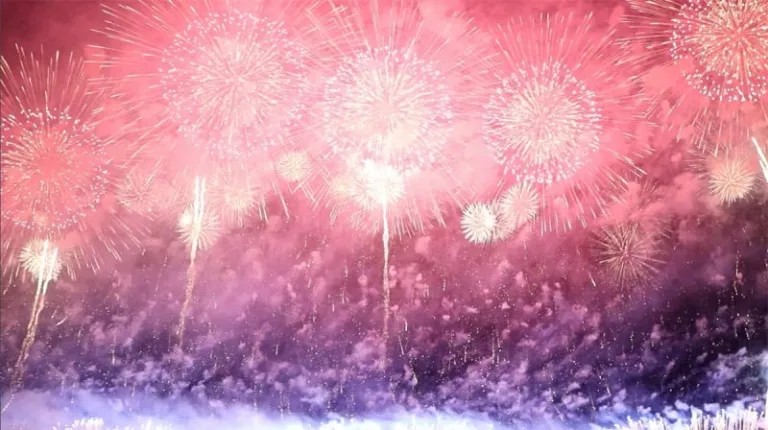 Image credit: Akagawa Fireworks Festival Facebook page
Image credit: Akagawa Fireworks Festival Facebook page
Some special highlights from last year’s festival include animated from Yamanashi manufacturer Marugo, with a video of it on Twitter garnering over 2 million views, and the “Moving Star” hanabi from Nagano-based Tamuraenka whose flickers are reminiscent of twinkling fairy lights.
While it is easier to obtain the tickets for reserved seats in this festival, it is said to be progressively difficult over the years as the festival gains popularity. If you are looking to get a good spot in the free sitting area, however, be sure to head down early as the area opens for visitors at 6:45pm.
Akagawa Fireworks Festival
Festival period: 17 August 2019 (Sat)
Approx. time of display: 7:15pm
Nearest station: JR Tsuruoka Station (15-minute walk to festival area)
Other Fireworks Festivals Near Tokyo
7. Tsuchiura All Japan Fireworks Competition (土浦全国花火競技大会) — Ibaraki
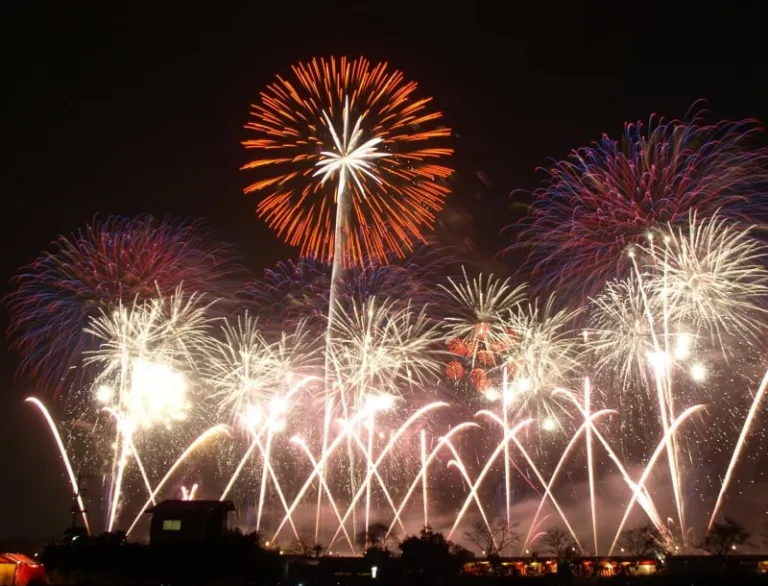 Image credit: inoc
Image credit: inoc
Like the Omagari National Fireworks Competition, the Tsuchiura All Japan Fireworks Competition is one of Japan’s Three Great Fireworks Festivals and Three Great Fireworks Competitions. The event was started in 1925 by a Buddhist priest who wanted to help business people from recession and to remember pilots who had died in battle, and today showcases innovative and brilliant works that amaze its visitors each year.
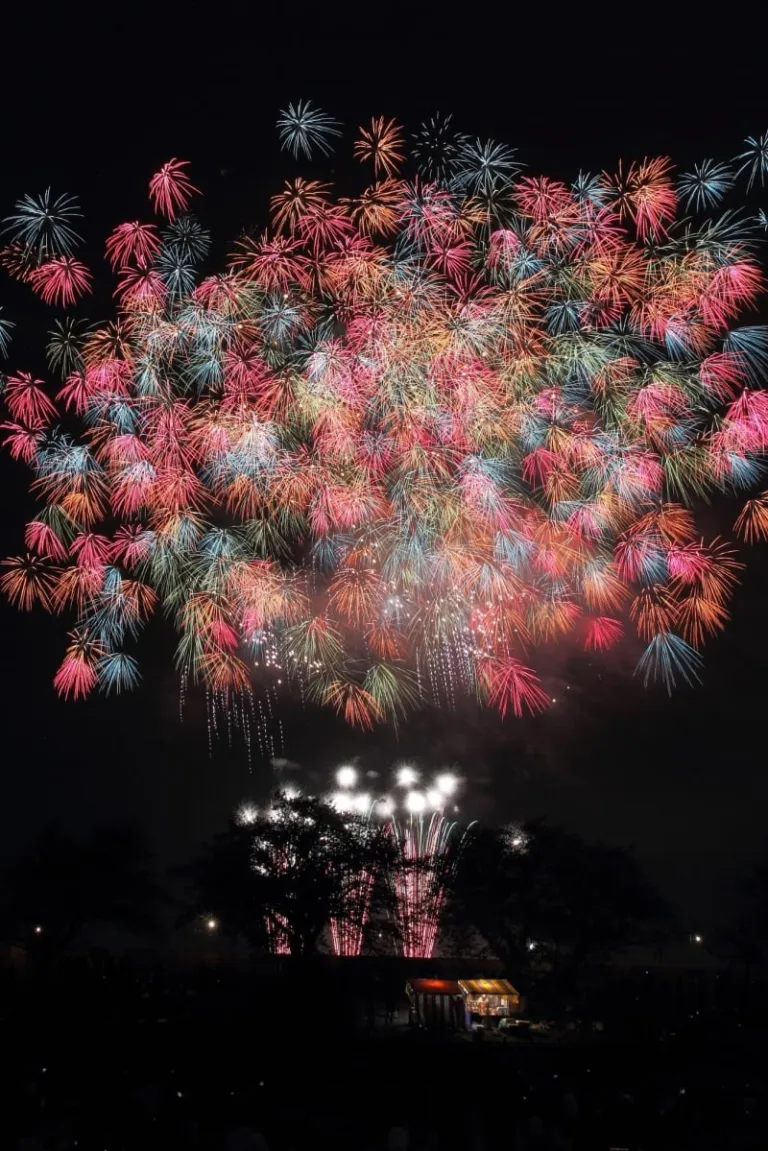 Image credit: 河田 貫成
Image credit: 河田 貫成
This competition brings pyrotechnicians from all over Japan to compete in three categories: starmines, size 10 shells and original displays. The spectacular show lasts for 2 and a half hours, which you can enjoy with snacks from the street stalls set up for the festival.
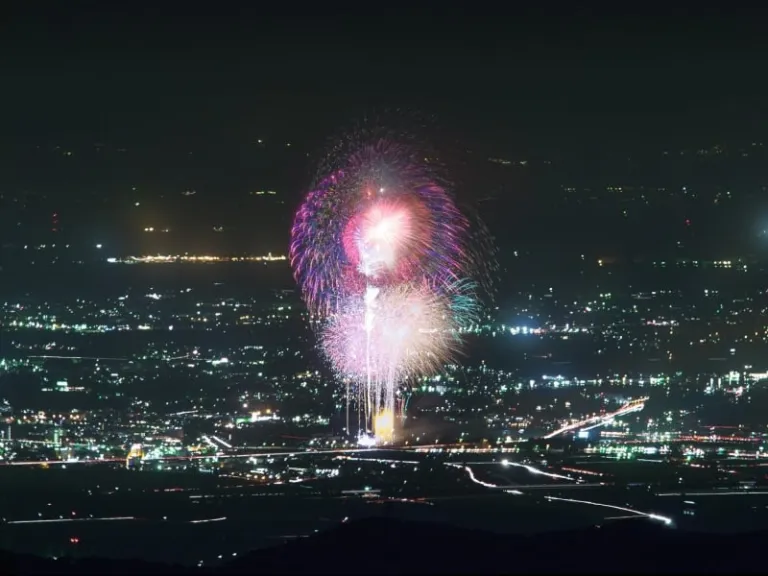 Image credit: Daisuke K
Image credit: Daisuke K
A small lecture will also be held on the major types of after the opening — a great way to better appreciate the pyrotechnics — but if you’re not proficient in Japanese, fear not, as we’ve got some information on for you below!
Tsuchiura All Japan Fireworks Competition
Festival period: 26 October 2019 (Sat)
Approx. time of display: 6pm~8.30pm
Nearest station: JR Tsuchiura Station (30-min walk to festival area; paid shuttle bus from east exit)
8. Sumida River Fireworks Festival (隅田川花火大会) — Tokyo
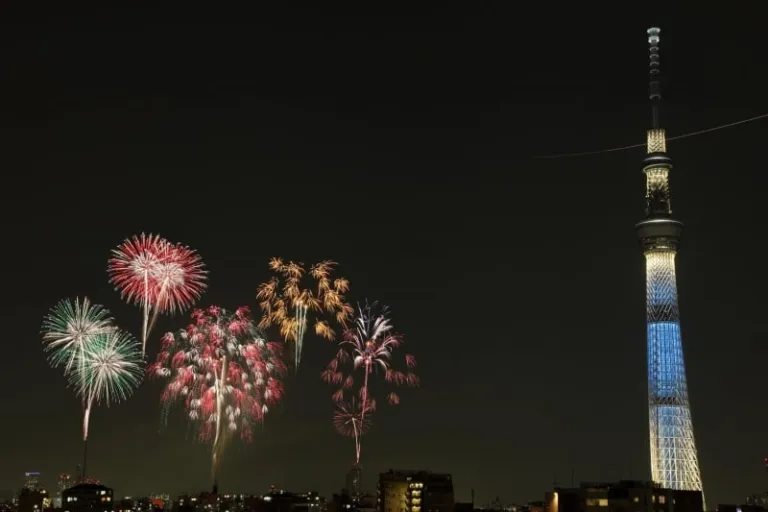 Image credit: てんどん
Image credit: てんどん
Probably one of the most well-known festivals in Japan, over a million people flock to the Sumida River Fireworks Festival to catch around 20,000 lighting up the cityscape each year. With its official start dating back to 1733 in the Edo period, spectators today can either catch a glimpse of the spectacle from the river banks or from cruise ships on the river.
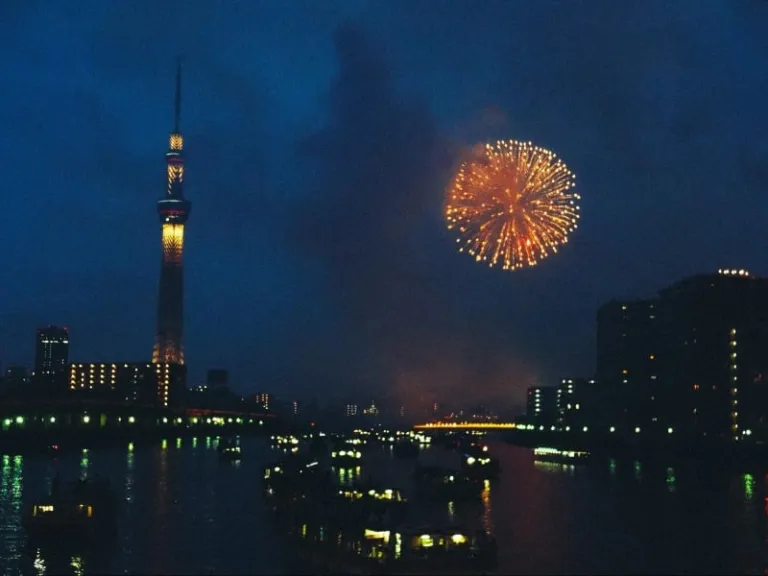 Image credit: Dick Thomas Johnson
Image credit: Dick Thomas Johnson
With this festival happening right in the heart of the capital city, competition is fierce for good spots to view the , with Shiori Park and Oyokogawa Water Park being relatively less congested viewing spots.
Otherwise, you have many more amazing festivals to choose from all around eastern Japan!
Sumida River Fireworks Festival
Festival period: 27 July 2019 (Sat) (Last Saturday of July annually)
Approx. time of display: 7:30pm~8.30pm
Nearest station: JR Ryogoku Station or JR Asakusabashi Station
Types of Fireworks
With the flurry of activity going on at each display, it’ll be hard to fully appreciate the spectacle unless you know what you’re looking at. So here are just some of the many types of you can spot at a festival in Japan — let’s see how many you can identify in the pictures above!
|
|
| Warimono The most basic of , these explode out in a circular show of sparks with crackling following after. Over 12 subtypes exist under this group, the most representative being the ‘Chrysanthemum’. | Pokamono Almost like shooting stars running amok, this rowdy type of have numerous sparks darting off in random directions after the initial flash, and is sure to cause gasps among spectators. |
|
|
| Sanjakudama This massive firework is often used as the climax of many firework displays, wowing the crowd with its sizeable reach and an aftermath of stars slowly cascading down the night sky. | Senrin This type of explode into a cloud of mini and crackles, colouring the sky with a myriad of colours for the duration of a blink of an eye. |
Fireworks are truly the quintessential sight of the Japanese summer, the hallmark of the season’s celebrations. It’s probably even safe to say that many would gladly take on the summer heat just to be able to look up into the sky and marvel at these luminous beauties.
With lighting up the sky at different parts of eastern Japan, you’ll probably be hard-pressed to find a better way of getting to them quickly and easily then using the JR East Pass.

JTB
Tel: +63 (02) 894 5528
H.I.S.
Tel: +63 (02) 822 4496
Brought to you by JR East (East Japan Railway Company).
Published at
About Author
Gabriel Oh
Subscribe our Newsletter
Get our weekly tips and travel news!
Recommended Articles
10 Commandments for Responsible Travel Flexing 10 Fairytale Castles In Europe Filipinos Need To See! Permission to feel like royalty even for a day?!
10 Family Outing Ideas in Metro Manila Under ₱500 Looking for a weekend bonding with the family under ₱500? Head to these places, pronto!
10 Visa-Free Destinations Perfect for Your Family’s Holiday Vacation Yes, family vacations are priceless. But the planning can be a major pain! If we’re being honest, we’d really prefer a stress-free experience, please. One of the biggest hurdles in planning an out-of-the-country trip with the family is getting visas for everyone on board. It’s time-consuming, expensive, and just generally very stressful. Luckily, there are […]
10 Water Sports & Activities in the Philippines (And Where to Try Them) Jump in and test the waters. (Just don’t forget your SPF.)
Latest Articles
Dingalan Travel Guide: Nature Spots to Discover Now Underrated coastal gem in Aurora
What to Eat in Bicol: Iconic Dishes and Treats, and Unique Pasalubong You’ll Love Spice up your foodie adventure with iconic Bicol dishes and must-try pasalubong!
Top Travel Trends in the Philippines for 2025 New spots, tips, and trends
New UK Adventure Park to Visit in Devon and Cornwall Fun countryside escape near London
Ultimate Camarines Norte Travel Guide: Waterfalls, Beaches, and More From surfing to secret waterfalls, Camarines Norte is your next escape!




